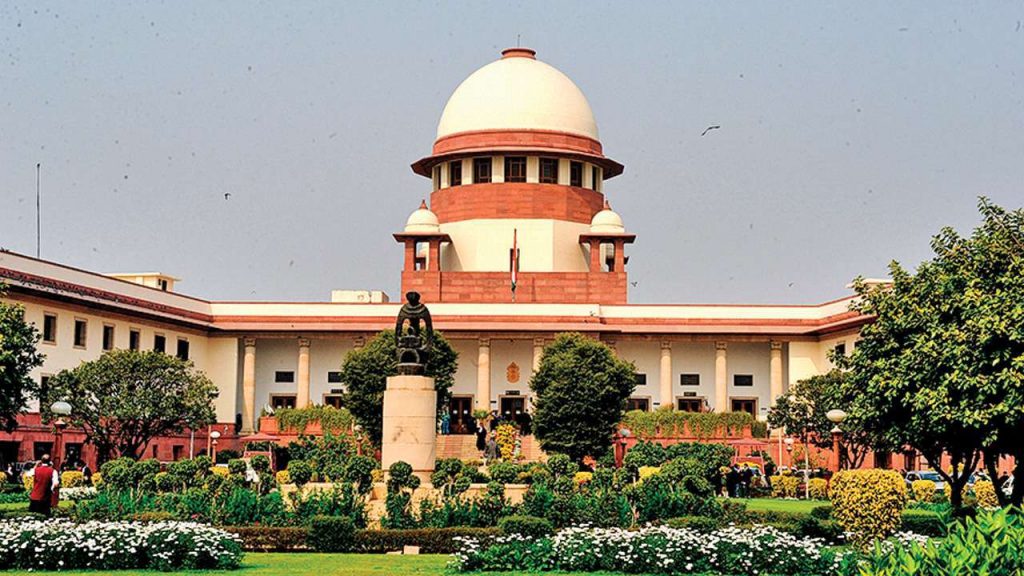New Delhi/Patna: The legal battle to save the centuries-old Patna Collectorate has highlighted the vulnerability of the built heritage in the Bihar capital, but the Supreme Court stay on its proposed demolition has lent a new hope, historians and advocates say.
A year ago, September 18, 2020, the apex court had, on a plea filed by heritage body INTACH, ordered a stay on the Bihar government’s plan to build a new collectorate complex by razing the Dutch-era landmark on the banks of the Ganga.
Delhi-based historian and author Swapna Liddle lamented that people have to go to the court for saving a historic landmark.
“And, it in a way it also reflects the vulnerability our built heritage faces amid rapid urbanisation in Patna and other cities. Heritage and development can go together harmoniously,” she said.
Liddle, the former convener of the Delhi Chapter of the Indian National Trust for Art and Cultural Heritage (INTACH), said, the Supreme Court stay has given hope that architectural heritage can have a better future, rather than being demolished in the name of development.
“Development should be done by putting heritage at the centre and making policies around it, and we can achieve wonderful results. The Chandni Chowk redevelopment project in Delhi is a good example,” she said.
Liddle, the author of ‘Connaught Place and the Making of New Delhi’ said the INTACH, set up in 1984, has fought many battles in and out of the court to ensure the protection of heritage, legally or otherwise.
The Delhi-based INTACH had taken the Bihar government to Patna High Court in August 2019 seeking the preservation of the Collectorate, and the constitution of Bihar Urban Arts and Heritage Commission, which had then been pending since 2012.
The state government had in 2016 proposed to demolish the Collectorate, which is a cluster of historic buildings dating from the Dutch-era Record Room and Old District Engineer’s Office to British-era DM Office and District Board Patna buildings, to build a new complex,
In March 2020, in the light of the directions of the high court, the new heritage commission was set up. However, INTACH then challenged its constitution in the high court, saying the seven-member panel had “no domain experts”, but only government officials as members.
The commission had concluded that the “structure-in-issue at Collectorate is not important from the point of view of history, architecture, aesthetics” and hence, the “need doesn’t seem to arise to preserve it”, according to the supplementary counter-affidavit that was filed by the Bihar government in the high court.
The legal battle to save the iconic landmark which started in 2019 hit a roadblock in September 2020 leaving the heritage buildings on the campus vulnerable again to demolition as the high court had disposed the case and allowed the government to take “necessary consequential action”, following which the INTACH went to the apex court.
“We went to the court only after no remedy was left. Elected members in a government should be a little more sensitive towards our built heritage. This is our cultural heritage, and we must all strive to protect it,” said advocate Roshan Santhalia, who appeared for INTACH in the Supreme Court.
The Supreme Court lawyer hoped for a “positive outcome” in this case which has thrown a spotlight on historical buildings in Patna, a city with a multi-layer history of over 2,000 years, ranging from the ancient Mauryan Empire to the British Raj.
Rajiv Soni, independent researcher and a core member of the citizen-led ‘Save Historic Patna Collectorate’ movement which was started in 2016 soon after the demolition was proposed to make way for a high-rise complex, also said the Supreme Court stay has generated hope for the future of Patna Collectorate and other historic buildings in Patna.
“In the first Master Plan of Patna made in 1962, the policy-makers had the vision to see that more space will be needed for Collectorate, court and other public offices. And, they also had the wisdom to propose the resetting of the Collectorate to another open area, and not demolish the old structures. The CM (Nitish Kumar) has laid the foundation stone for a new Collectorate complex (on September 16 last year) which is fine, now let that structure be built somewhere else,” he said.
In Patna, all new constructions are happening around Gandhi Maidan or in the historic core of the city, at the cost of the old historic fabric of the city, he lamented.
“Policy-makers would do well to plan new buildings outside the old city limits as the population is set to grow and building huge complexes in old areas will only increase carbon footprint and traffic congestion,” he said.
The Collectorate is one of the last surviving signatures of Dutch architecture in the Bihar capital. Some of the key scenes of Oscar-winning film ‘Gandhi’ was shot in the Record Room and DM Office in 1980s.
In 2016, the then Dutch ambassador to India Alphonsus Stoelinga had written to the Bihar chief minister appealing to him to preserve the historic Patna Collectorate as a “shared heritage”, and London-based Gandhi Foundation had appealed to the government to link the landmark with the Gandhi tourism circuit.
Historians, urban planners, conservation architects and other heritage experts have also been appealing since 2016 to the Nitish Kumar-led government to not dismantle the collectorate, saying it will “set a very bad precedent” and “jeopardise” the fate of other colonial-era buildings.
PTI
